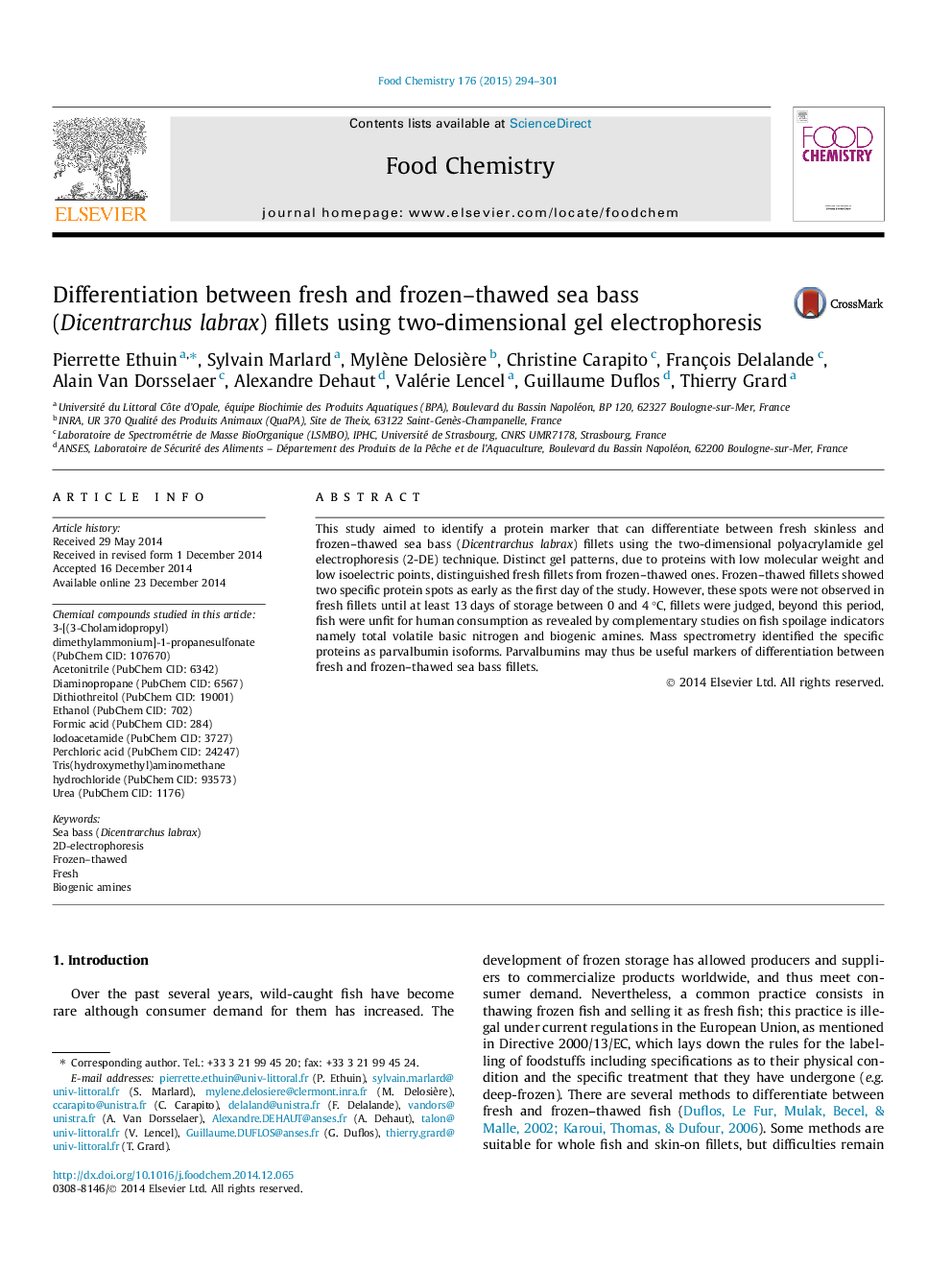| Article ID | Journal | Published Year | Pages | File Type |
|---|---|---|---|---|
| 7593003 | Food Chemistry | 2015 | 8 Pages |
Abstract
This study aimed to identify a protein marker that can differentiate between fresh skinless and frozen-thawed sea bass (Dicentrarchus labrax) fillets using the two-dimensional polyacrylamide gel electrophoresis (2-DE) technique. Distinct gel patterns, due to proteins with low molecular weight and low isoelectric points, distinguished fresh fillets from frozen-thawed ones. Frozen-thawed fillets showed two specific protein spots as early as the first day of the study. However, these spots were not observed in fresh fillets until at least 13 days of storage between 0 and 4 °C, fillets were judged, beyond this period, fish were unfit for human consumption as revealed by complementary studies on fish spoilage indicators namely total volatile basic nitrogen and biogenic amines. Mass spectrometry identified the specific proteins as parvalbumin isoforms. Parvalbumins may thus be useful markers of differentiation between fresh and frozen-thawed sea bass fillets.
Keywords
Related Topics
Physical Sciences and Engineering
Chemistry
Analytical Chemistry
Authors
Pierrette Ethuin, Sylvain Marlard, Mylène Delosière, Christine Carapito, François Delalande, Alain Van Dorsselaer, Alexandre Dehaut, Valérie Lencel, Guillaume Duflos, Thierry Grard,
